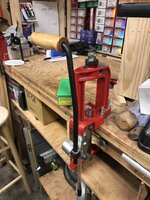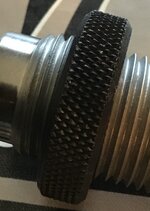EastHumboldt
WKR
- Joined
- Nov 14, 2020
- Messages
- 1,614
Up until recently I’ve just been full length sizing, trimming, and loading. I’ve read that full length sizing every time can reduce case life, and I wasn’t happy with the consistency of bullet seating.
Next I tried this process to hopefully decrease the amount I’m working the brass, and achieve longer case life.: Annealing once fired cases and then I neck sized only Lee collet die, to get more consistent bullet seating. This worked fine, but after two firings many of the cases are showing a hard bolt close.
After some homework here and elsewhere this is the new plan: to bump the shoulders .003 using a Redding body die, and then size the necks using a Lee collet die. I lubed and put 20 once fired annealed cases through the Redding body die (which doesn’t size the neck at all, just the case sides and shoulders.). Using a Hornady comparator I got the following results, ranging from a bump of .003 to .010. I wrote down the amount each case was bumped in thousandths, all the cases were measured with the primers knocked out.

Here’s my press and the empty die box. To bump I’m putting them in the die giving it a firm pump, rotating the case 1/2 turn, repeat.

So what am I doing wrong?
Next I tried this process to hopefully decrease the amount I’m working the brass, and achieve longer case life.: Annealing once fired cases and then I neck sized only Lee collet die, to get more consistent bullet seating. This worked fine, but after two firings many of the cases are showing a hard bolt close.
After some homework here and elsewhere this is the new plan: to bump the shoulders .003 using a Redding body die, and then size the necks using a Lee collet die. I lubed and put 20 once fired annealed cases through the Redding body die (which doesn’t size the neck at all, just the case sides and shoulders.). Using a Hornady comparator I got the following results, ranging from a bump of .003 to .010. I wrote down the amount each case was bumped in thousandths, all the cases were measured with the primers knocked out.

Here’s my press and the empty die box. To bump I’m putting them in the die giving it a firm pump, rotating the case 1/2 turn, repeat.

So what am I doing wrong?

